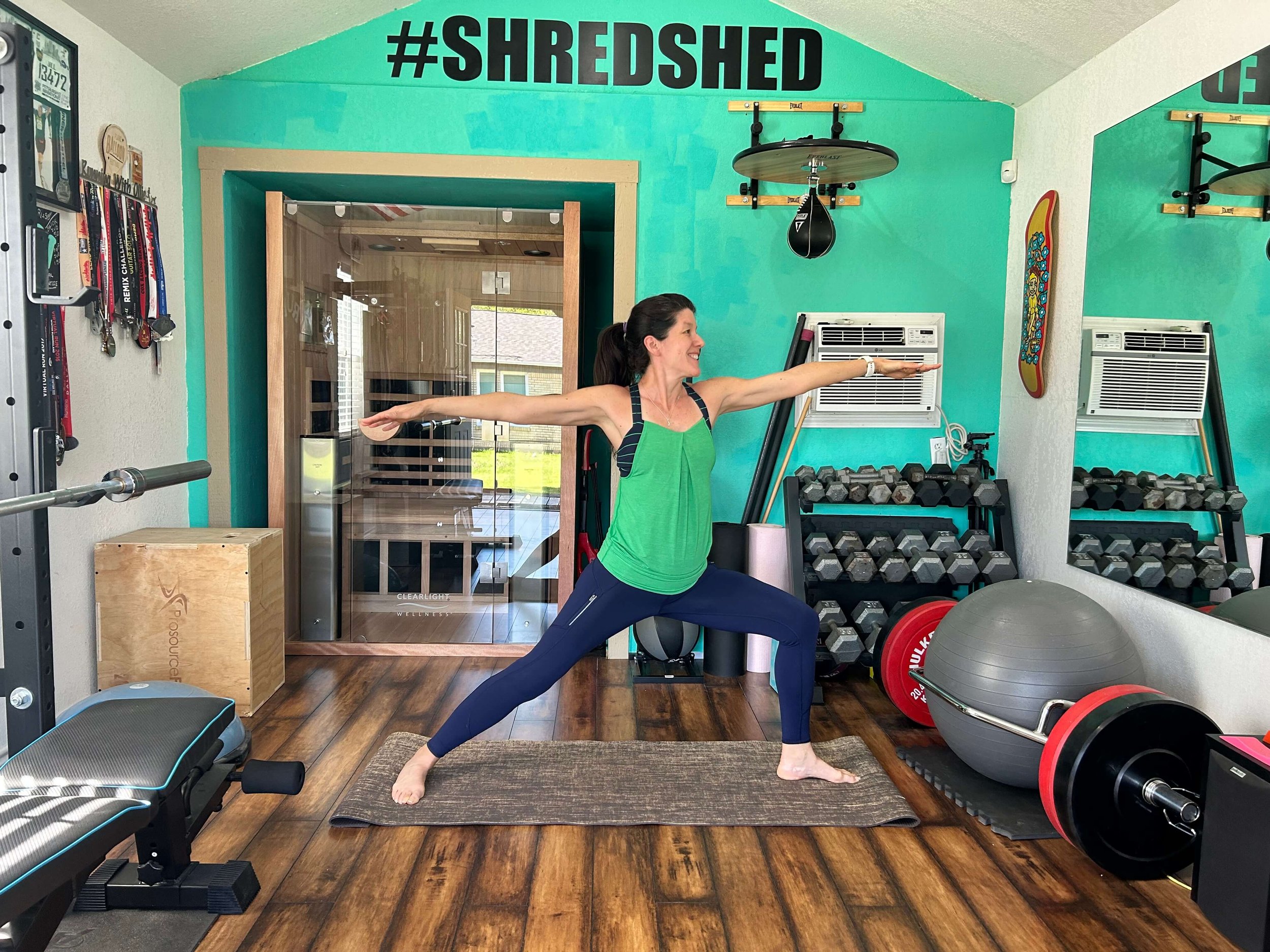Hi, Friends. Welcome to a very special edition of Workout Wednesday! This year has flown by. I can't believe we are embarking on the holiday season once again. I love the end of the year to think about my goals for the upcoming new year, but also get a head start on achieving my goals. Why wait until January 1st to start working towards your goals?
The end of the year is a fantastic time to evaluate our accomplishments of the last year, to think about what went right and what we can improve on. I have a lot of goals for 2017 (maybe bigger and bolder than ever before in my life, it's both scary and exciting) but I'll use the end of November and December to start ramping up for those goals.
I challenge you, no matter what your goals are for the new year, start thinking about the steps you can take today and throughout December to help get you there. When January rolls around (in a blink of an eye) you'll be that much closer to reaching your goals.
Today we are talking about running goals. If you know me at all, you know that I am a huge proponent of strength training for runners. When runners strength train along with their running training, they end up stronger, healthier, faster and less prone to injury.
I put together this four week strength & running schedule to increase speed. It has all the components of a well-balanced training plan.
PIN ME TO SAVE FOR LATER!
Who is this plan for? This plan is intended for anyone who has a solid running base. If you have been running three to four days a week for five to six weeks this plan is for you. If you do not have that base yet, get a solid running base under your belt before starting this plan.
Running
It goes almost without saying, if you want to be a better runner, you need to run more. Staying consistent with your running schedule is one of the most important things you can do to improve. Before starting this program you should have a solid running base.
In the plan we have several running days:
EASY RUNS:
An easy run is done at conversational pace. It means what it sounds like, that you should be able to carry on a conversation during your run. If you are a beginner this may mean brisk walking. Easy runs are as important for building endurance and allowing proper recovery after hard workouts.
INTERVALS/FARTLEKS:
Intervals are running workouts that vary the speed to allow for periods of high intensity work followed by recovery. They can be very effective in improving running economy as long as they are done properly. Always allow recovery days or rest days after hard interval work. Never do interval workouts back to back to allow for proper recovery and avoid potential injury.
HILLS:
Hill training is a staple for running strength. One day a week of hill work can help improve speed and efficiency.
LONG RUN:
Long run training is on the schedule for anyone training to run farther than a 5K (3.1 miles). A long run builds endurance and should be run 1-2 minutes slower per mile than your 5K pace. Long run distances should be increased by no more than 10% each week for three weeks before backing off the distance on the fourth week. A long run is typically anything more than an hour. If you are not training to run long, you can replace your long run on the schedule with any distance at conversational pace.
Strength Training
Strength training for runners is so important, but it doesn't have to overtake your running schedule. In fact, if your goal is to be a better, faster runner, running should take priority. However, making time for one to two strength training sessions a week can lead to big improvements in your running.
CIRCUITS:
The way a bodybuilder or power lifter strength trains is completely different than the way a runner strength trains. We train differently for different goals. We are not trying to pack on muscle, but rather increase strength and work out any muscle imbalances. We do a lot of circuit style, HIIT (High Intensity Interval Training) and Tabata-style strength training. These types of workouts help improve strength and endurance because you move from one exercise to the next with minimal rest. They are quick and effective. No need to spend hours in gym.
CORE (HIPS/ABS)
I separate core workouts from regular strength training because while you will do core work in your strength circuits, you should place special emphasis on making sure you build hip/ab strength. Remember that your core is not just your abdominals, it is essentially everything under your chest and above your thighs. Core work including hip strength is one of the most important things runners can do to avoid muscle imbalances from running and injury. These exercises are not always the most exciting, but they are essential, which is why I recommend adding them on at the end of an easy run day.
REST
Arguably one of the most important components of a training plan is rest. Your body adapts to the stresses that you place on it during rest. That means your body repairs, rebuilds, gets stronger and faster during rest, not during the workout. If you don't plan for proper recovery you will never allow your body the time it needs to grow stronger. More is not always better. Rest means taking one to two full rest days a week and getting 7-8 hours of sleep at night. If you don't do these things, you could be sabotaging your results. Put in the work, but allow your body the recovery time it requires.
Download the four week strength and running schedule PDF with clickable resources to running and strength workouts to improve your 5K time before Christmas!
Download the training schedule below to improve your speed by Christmas
I am a NASM personal trainer and RRCA adult distance running coach that specializes in strength training for runners. I offer in-person training in the Shredshed, online training and Fit to Run bootcamps. If you are interested in a more in-depth running or strength training plan, please contact me. Have questions? I'd love to help.
While I am a certified personal trainer, I am not your personal trainer. Since I don't know your exercise abilities, injury background or medical history, please see your doctor before beginning any new exercise program. This is an opinion blog. No information in this blog is intended to be taken as medical advice or prescription. Please see your doctor and/or registered dietitian for any health concerns.













